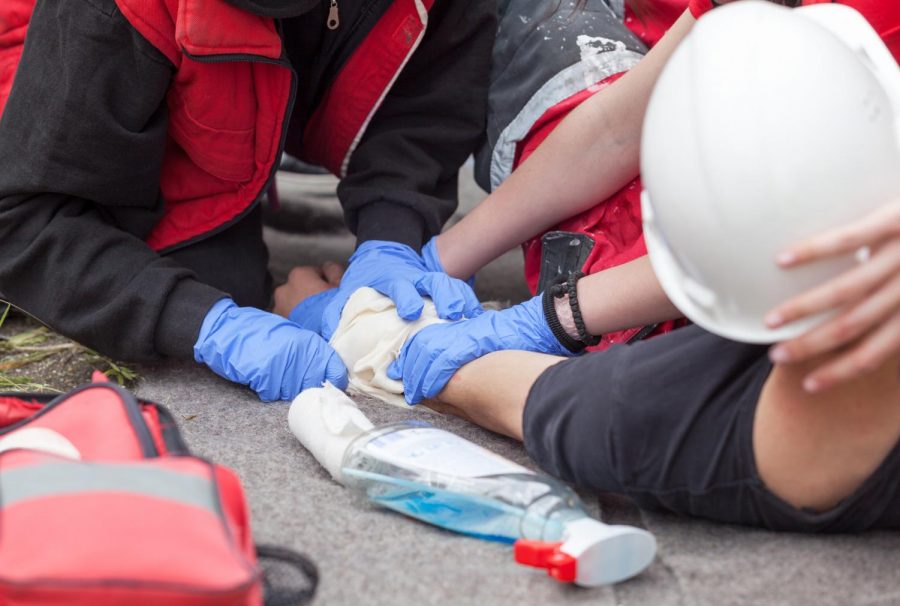The Doctor Is In: Relearning your ABCs to save lives in a trauma setting
Death because of blood loss is common in settings such as vehicle accidents or mass shootings, but everyone has the potential to save lives by applying bleeding-control principles.
March 31, 2019
Each year, 12 million people are trained by the American Heart Association on the basics of CPR. CPR saves lives in the event of a heart attack — one of the leading causes of death in the U.S. Another major cause of death worldwide is unintentional injury related to trauma, and with trauma comes extreme blood loss. However, only 425,733 people were trained in 2018 to stop traumatic bleeding and save lives.
The national Stop The Bleed campaign has been the driving force behind the movement of trauma care for civilians in response to the Sandy Hook Elementary tragedy. The Stop The Bleed organization was arranged to take the concepts of bleeding control learned on the battlefield and apply them to any emergency so that anyone can apply the basics of bleeding control to save lives. All you have to remember are the “ABCs” or “Alert-Bleeding-Compress.
Alert
The first step is to call 911 to alert authorities about a potentially dangerous situation and to request an ambulance for the injured. Next, make sure the environment is safe. Your safety is a priority, and if while helping another person the scene becomes dangerous, you should immediately evacuate and attempt to evacuate the bleeding victim as well.
RELATED: The Doctor Is In: You need to know how to prevent opioid overdose, even if you don’t use opioids
Bleeding
After 911 is called and the scene is safe, it is important to identify areas of major bleeding. Wounds that are spurting blood, seeping through clothes, or pooling on the ground indicate blood loss. Some clothing may need to be moved or removed to check for bleeding, especially if a patient is losing consciousness and no apparent wound has been found.
Additionally, areas of amputation are large potential bleeding sources that should be compressed.
RELATED: The Doctor Is In: How to take on the common cold
Compress
Most of us do not carry a tourniquet or a first-aid kit equipped to handle bleeding, but you can use a clean cloth, like a shirt, to cover the wound. If the wound is deep, the cloth should be pushed into the wound. With the cloth on the wound, apply firm, continuous pressure on the wound and push as hard as you can until help arrives. It is critical that there is enough pressure to adequately stop bleeding, which will be painful for the victim, but pain that limits blood loss saves lives.
If you want to learn more about how to stop bleeding in the event of an emergency, visit bleedingcontrol.org for information, supplies, and finding classes near you. Everyone is at risk to suffer from massive bleeding. Iowa’s Good Samaritan Law provides legal protection for those who act voluntarily and in good faith to provide emergency care. This protects those who perform CPR, the Heimlich maneuver, and the ABCs of bleeding control from facing legal action for helping someone in need.
So, what would you do if someone is bleeding out in an emergency? Just remember your ABCs.
— Mason LaMarche
First-year UI medical student













